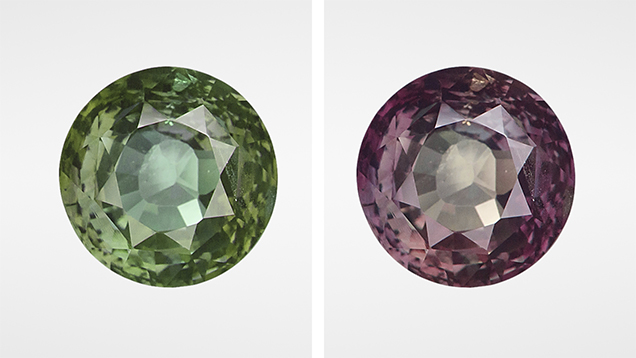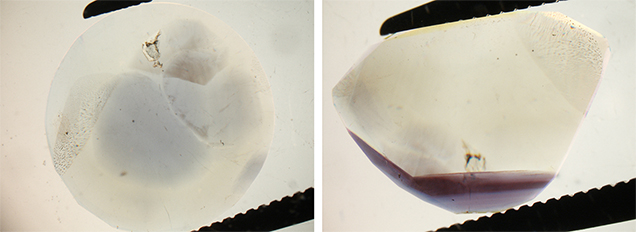Dramatic Color Zoning in Alexandrite

An 8.55 ct alexandrite was recently submitted to GIA’s Bangkok laboratory. Standard gemological testing yielded a refractive index of 1.745–1.754 and a specific gravity of 3.73. The stone displayed a change of color from green in daylight to reddish purple in incandescent light (figure 1). All of these properties were consistent with alexandrite.

Microscopic examination revealed natural fingerprints, needles, zoned particles, and color zoning, along with internal growth features. Interestingly, the stone showed a thin color zone very close to some of the pavilion facets and culet when immersed in methylene iodide (figure 2).

Testing with a handheld spectroscope and ultraviolet-visible (UV-Vis) spectroscopy revealed chromium (Cr3+) features. The absorption feature assigned to Cr3+ was located at 680 nm, with a broad band around 589 nm (figure 3). In contrast, when examined from the side (girdle to girdle), no Cr3+ feature was detected. This confirmed that color zoning at the culet strongly affected the color of this stone and its color-change effect.
The cutter designed the gem to contain the thin color zone along the pavilion facets and culet to display a color change when viewed face-up. Without the Cr3+-containing color zone, this stone would be chrysoberyl.
This example illustrates that orienting a color zone with the right trace elements combined with proper cutting can affect the variety designation of a gem.
.jpg)


